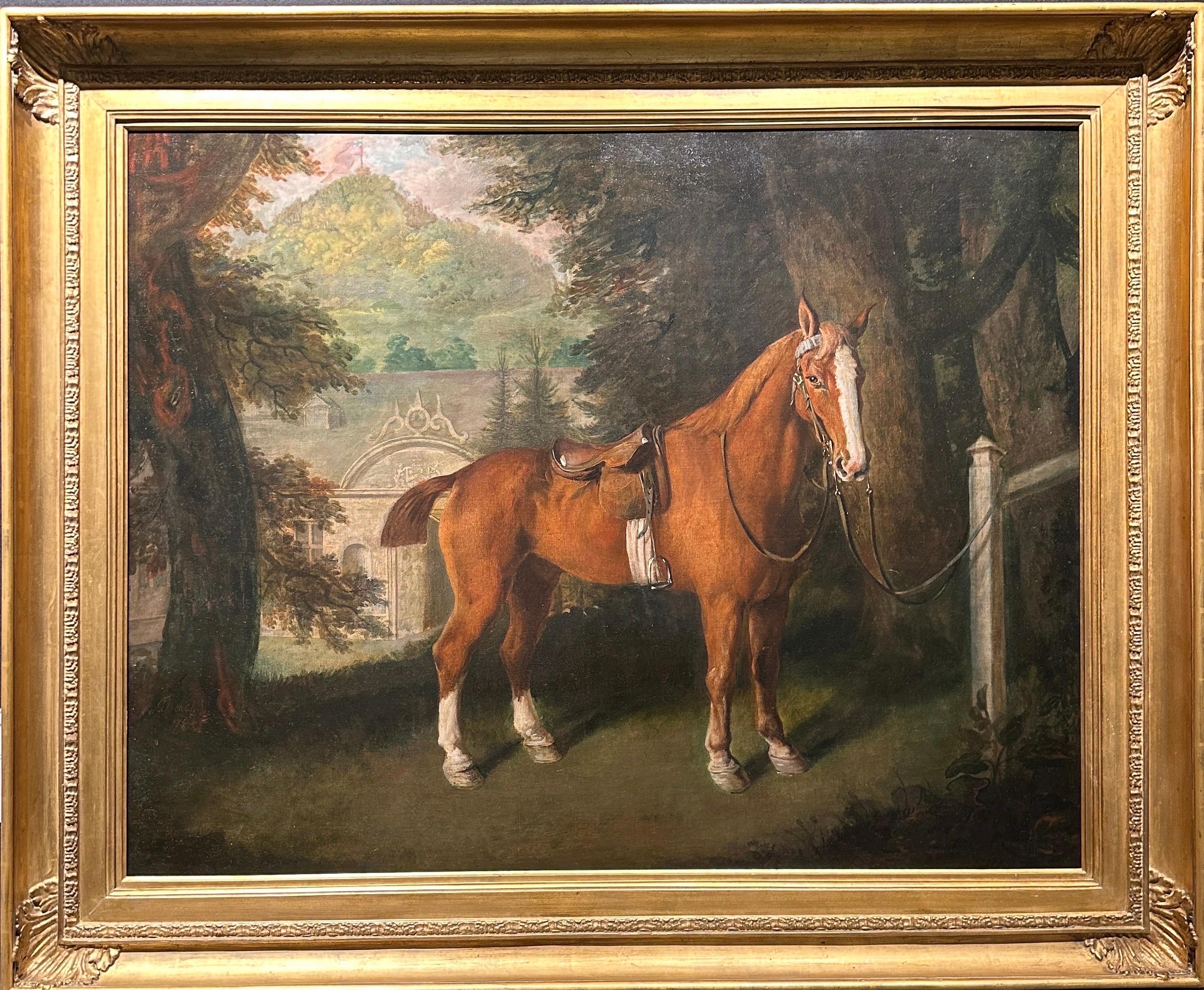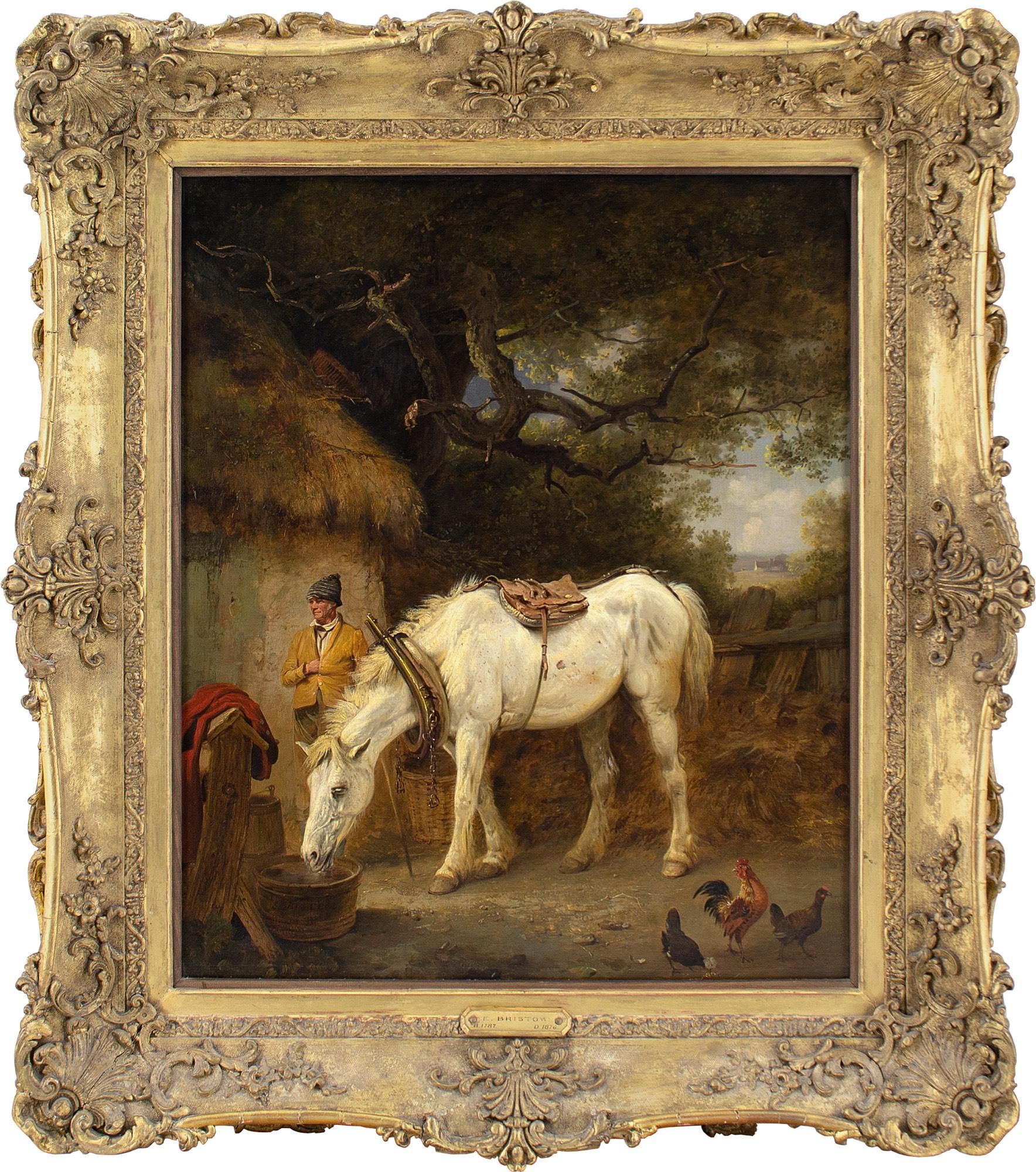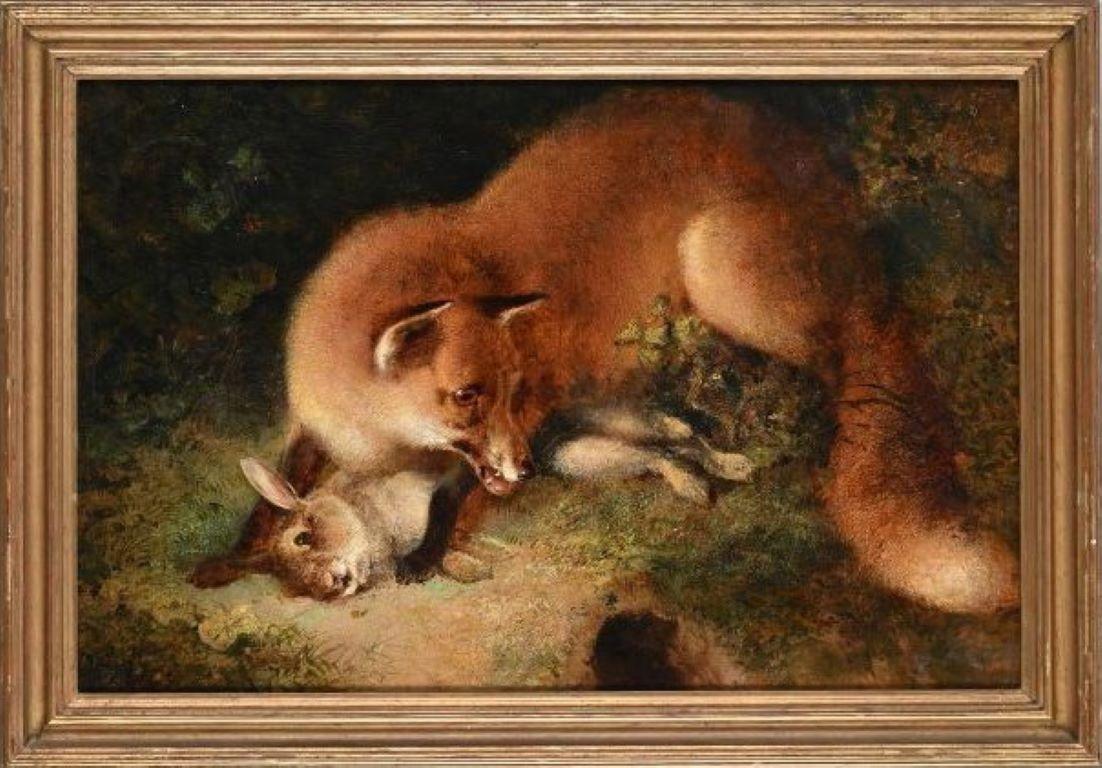John Frederick Herring Sr.Fine Original 1830's Signed Oil Painting Portrait of Derby Winner Racehorse1833
1833
About the Item
- Creator:John Frederick Herring Sr. (1795 - 1865, British)
- Creation Year:1833
- Dimensions:Height: 14 in (35.56 cm)Width: 18 in (45.72 cm)Depth: 1 in (2.54 cm)
- Medium:
- Movement & Style:
- Period:
- Condition:
- Gallery Location:Cirencester, GB
- Reference Number:1stDibs: LU509314288622
John Frederick Herring Sr.
John Frederick Herring Sr., born in London in 1795, was the son of a London merchant of Dutch parentage, who had been born overseas in America. The first eighteen years of Herring's life were spent in London, where his greatest interests were drawing and horses. In 1814, at the age of 18, he moved to Doncaster in the north of England, and by 1815, had married Ann Harris. His sons John Frederick Herring Jr., Charles Herring, and Benjamin Herring were all to become artists, while his two daughters, Ann and Emma, both married painters.
In Doncaster, Herring was employed as a painter of inn signs and coach insignia on the sides of coaches, and his later contact with a firm owned by a Mr. Wood led to Herring's subsequent employment as a night coach driver. Herring spent his spare time painting portraits of horses for inns, and he became known as the “artist coachman.” Herring's talent was recognized by wealthy customers, and he began painting hunters and racehorses for the gentry.
In 1830, Herring left Doncaster for Newmarket, England, where he spent three years before moving to London. During this time, Herring might have received tuition from equestrian artist Abraham Cooper. In London, Herring experienced financial difficulties and was given financial assistance by W. T. Copeland, who commissioned many paintings, including some designs used for the Copeland Spode bone china. In 1840–41, Herring visited Paris, painting several pictures, on the invitation of the Duc d’Orleans, the son of the French King Louis-Phillipe.
In 1845, Herring was appointed Animal Painter to the Duchess of Kent, followed by a subsequent commission from the ruling Queen Victoria, who remained a patron for the rest of his life. In 1853, Herring moved to rural Kent in the southeast of England and stopped painting horse portraits. He spent the last 12 years of his life at Meopham Park near Tonbridge, where he lived as a country squire. He then broadened his subject matter by painting agricultural scenes and narrative pictures, as well as his better-known sporting works of hunting, racing and shooting.
A highly successful and prolific artist, Herring ranks along with Sir Edwin Landseer as one of the more eminent animal painters of mid-nineteenth century Europe. The equestrian paintings of Herring were very popular, and many were engraved, including 33 winners of the St. Leger and 21 winners of the Derby. Herring exhibited at the Royal Academy from 1818–65, at the British Institution from 1830–65, and at the Society of British Artists in 1836–52, where Herring became Vice President in 1842.
Find original John Frederick Herring Sr. paintings, prints and other art on 1stDibs.
(Biography provided by Isherwood Fine Art)

- ShippingRetrieving quote...Ships From: Cirencester, United Kingdom
- Return PolicyA return for this item may be initiated within 3 days of delivery.
- Large Antique English Dog Oil Painting with Kitten Signed & Dated 1927 framedLocated in Cirencester, Gloucestershire"Touch it if you dare!" English artist, signed and dated 1927 oil on canvas, framed framed: 25 x 31 inches canvas: 18 x 24 inches provenance: private collection, England condition: v...Category
1920s English School Animal Paintings
MaterialsOil, Canvas
- Scottish Highlands Loch Scene at Sunset Cattle Watering Signed Antique OilLocated in Cirencester, GloucestershireThe Close of Day Scottish Highland Loch at sunset with cattle watering British School, early 20th century signed initials lower left corner oil on board, unframed board: 7 x 10 inche...Category
Early 20th Century English School Landscape Paintings
MaterialsOil
- Antique Scottish Signed Oil Painting Cattle over Stone Bridge Highland RiverLocated in Cirencester, GloucestershireCrossing the Bridge Scottish School, late 19th century signed lower corner oil painting on canvas, framed framed: 9 x 13 inches canvas: 7 x 11 inches provenance: private collection, ...Category
Late 19th Century Victorian Landscape Paintings
MaterialsOil, Canvas
- Large French Oil Painting Two Horses in Landscape Grey and Chestnut framedLocated in Cirencester, GloucestershireHorses Standing in Landscape French School, 20th century oil on canvas, framed framed: 25 x 34 inches canvas: 19.5 x 30 inches provenance: private collection, France condition: very ...Category
20th Century Victorian Animal Paintings
MaterialsOil, Canvas
- 20th Century French Post Impressionist Oil Swans on Lily Pond Chateau LakeLocated in Cirencester, GloucestershireThe Chateau Lake by Josine Vignon (French 1922-2022) signed front and back oil painting on canvas, unframed canvas: 29 x 24 inches Colors: Green colors, blue, yellow and white Ver...Category
Mid-20th Century Post-Impressionist Landscape Paintings
MaterialsOil, Canvas
- Polo Pony Smiths Lawn Windsor Polo Fields Original British Horse Oil PaintingBy British Sporting ArtLocated in Cirencester, Gloucestershire"Security" Tania Butler (second half 20th century) ‘Security, Smith's Lawn, Windsor’ oil on canvas, signed and dated 1961 lower right, inscribed verso, gilt frame oil on canvas, fram...Category
Mid-20th Century Modern Animal Paintings
MaterialsOil, Canvas
- A Sulky on the RoadLocated in Hillsborough, NCHorse and Sulky reminiscent of Currier and Ives by George Christopher Horner (1821-1881), British artist, imported by Saltire Gallerie. Signed and da...Category
1840s English School Animal Paintings
MaterialsCanvas, Oil
- A large English 18th century painting of a Chestnut horseBy Thomas BeachLocated in Bath, SomersetA saddled chestnut hunter tethered to a post at the entrance to stables with a wooded landscape and a hill beyond. Signed and dated lower left, 'T. Beach pt., 1785'. Provenance: Anonymous sale, London, Christie's 28 May 1999. lot 15 Thomas Beach was essentially known as a portrait artist and the present painting is a rare example of his skill as an animal painter. His ability to convey a sense of the character of his sitters is evident here in the remarkably sensitive portrayal of the horse's expression. Beach painted...Category
18th Century English School Animal Paintings
MaterialsCanvas, Oil
- Edmund Bristow, Farmyard With White Mare, Oil PaintingBy Edmund BristowLocated in Cheltenham, GBThis fine mid-19th-century oil painting by British artist Edmund Bristow (1787-1876) depicts a farmhouse with a saddled white mare taking water while a cockerel looks on. An older ma...Category
1850s English School Animal Paintings
MaterialsOil, Canvas
- English late 19th century painting of a fox with a rabbitBy George William HorlorLocated in Bath, SomersetA fox and a rabbit by a rabbit hole in woodland undergrowth, Circle of George William Horlor (1849-1895) Oil on canvas in a giltwood frame. Canvas size: 46 x 71cm In frame: 59x 83cm ...Category
Late 19th Century English School Animal Paintings
MaterialsCanvas, Oil
- Scottish Keeper’s Pony and Hunting DogsBy John GiffordLocated in Hillsborough, NCScottish/British artist John Gifford is best known for his paintings of Setters, Spaniels and Ponies in the Scottish countryside and highlands. Sought after for his sporting artwor...Category
19th Century English School Animal Paintings
MaterialsCanvas, Oil
- English early 19th century painting of a chestnut hunter in a landscapeBy John Ferneley SeniorLocated in Bath, SomersetA painting of a chestnut hunter in a landscape with a horse and rider accompanied by two hounds by a woodland river in the distance. Signed and inscribed 'Melton Mowbray', lower left. Oil on canvas in a giltwood frame. John Ferneley Sr (1782-1860) was born the son of a Leicestershire wheelwright, the youngest of six children. He is known as one of the great British equine artists, perhaps only second to Stubbs in terms of raw ability. Ferneley originally worked with his father, until by chance the Duke of Rutland saw some of his work on the side of a cart on which Ferneley and his father had been working. The Duke was so impressed with Ferneley that he persuaded John's father to allow him to become the pupil of Benjamin Marshall. Ferneley was so talented that apparently he produced almost perfect copies of his tutor's paintings and they were said to have been indistinguishable from the master’s. Marshall also enrolled him as a student of the Royal Academy Schools. In 1804 Ferneley paid a man named Thomas Harrison...Category
Early 19th Century English School Animal Paintings
MaterialsCanvas, Oil






